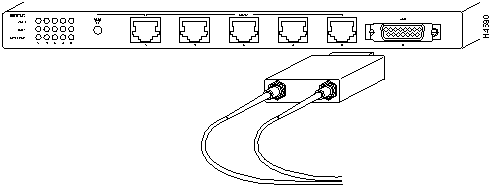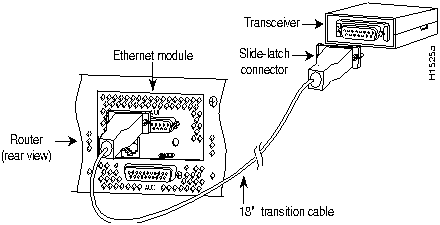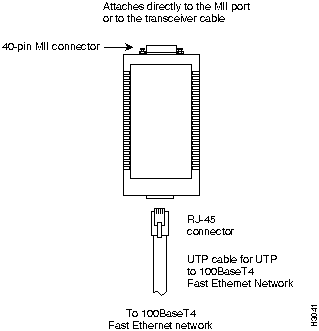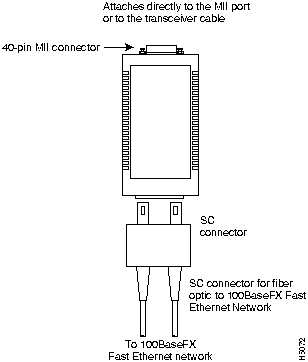
Transceivers vs. Converters
Introduction
An Ethernet port on a device, such as a router, can have two different types of connectors:
Media independent, e.g., AUI, MII
Media dependent, e.g., 10BaseT, 100BaseFX
Transceivers are used with media independent connectors. Converters are used to convert one media dependent connector to a different media. Both are explained in more detail below.
Transceivers
A media independent connector can connect to any cable type, but it requires a transceiver to adapt the media independent connector to a specific media type. For example,
- Media independent connector + transceiver -> Specific cable type
As you can see, the advantage of a media independent connector is that it can connect to any cable type by simply using a different transceiver.
The media independent interface for Ethernet is the AUI interface. Its connector is a 15 pin D shell connector. The media independent interface for Fast Ethernet is called an MII interface. Its connector is a 40 pin, SCSI-like, D shell connector.
Note: You cannot connect an AUI port directly to another AUI port. You must use a transceiver on each AUI port and connect the transceivers together with one of the standard cable types. The same rule applies to MII ports.
Examples of transceiver connections are
AUI connector + 10Base2 transceiver -> 10Base2 cable

AUI connector + 10BaseFL transceiver -> 10BaseFL cable

AUI connector + extension cable + transceiver -> specific cable matching transceiver

Remember! You cannot connect two AUI ports together with a transition cable! It can damage the hardware if you do this.
MII connector + 100BaseT4 transceiver -> 100BaseT4 cable

MII connector + 100BaseFX transceiver -> 100BaseFX cable

Converters
In environments where one type of cable is predominant, manufacturers often include the transceiver into a device's Ethernet and Fast Ethernet ports. Therefore, the port becomes media dependent and only the cable type matching the internal transceiver can connect to the port. For example,
10BaseT connector -> 10BaseT cable
10Base2 connector -> 10Base2 cable
But what happens if you have a port designed for one media, e.g., 10BaseT, but you want to connect it to a dissimilar cable type, e.g., 10Base2? In these cases, you need a converter which converts an interface from one cable type to another cable type. For example,
10BaseT connector + 10BaseT-to-10Base2 converter -> 10Base2 cable
10BaseT connector + 10BaseT-to-10BaseFL converter -> 10BaseFL cable
In summary, a transceiver connects an AUI or MII interface to a specific cable type. A converter connects an interface for a specific cable type to a different cable type.